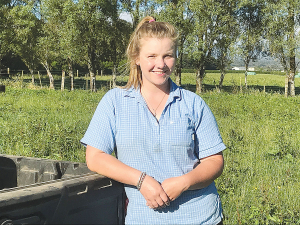2024/25 Dairy Statistics: NZ dairy farmers boost production with fewer cows
According to the New Zealand Dairy Statistics 2024/25 report, New Zealand dairy farmers are achieving more with fewer cows.
 Stratford farmer, Kelsey Thompson, says the power of Minda Live and the app is all she needs on-farm in terms of information requirements to manage her herd.
Stratford farmer, Kelsey Thompson, says the power of Minda Live and the app is all she needs on-farm in terms of information requirements to manage her herd.
Farmer-owned co-operative LIC says its herd management system Minda Live and its corresponding app has evolved over the past year with more than 60 improvements added based on farmer feedback.
As a result, use of Minda Live and the Minda app has increased significantly, says the co-op. More than 8,500 farmers are now using Minda Live, and 10,000 farmers and their staff are using the Minda app to record animal events and access their data to make informed decision on-farm.
Kelsey Thompson, a Stratford-based farmer and Minda user, says the power of the system is all she needs on-farm in terms of information requirements to manage her herd of 170 Holstein-Friesians and make recording simple this calving.
"It's so easy because you can do what you need to on-the-spot, on the farm, in the cow shed; it's all done in one go - and that includes your matings, your calvings, and any health treatments. Last spring I recorded all my matings, every day, straight into my phone, and then it was updated in Minda Live when I got home every day. It's very simple.
"During calving I still use the yellow notebook a bit, but I transfer the information straight to the app in my phone, then it automatically goes through to Minda Live."
Kelsey believed it was a matter of diving-in and getting used to the software, most of which was intuitive.
“It’s one of those things that as you get used to things it just gets easier and easier. This season I got my Mum into it – she was a huge user of Mindapro – and now she pretty much only uses Live.
“LIC keeps updating the software too, which helps – little things get refined to make the reports better and information more relevant.”
Jessica Bedford, LIC Minda product experience manager, said development work had been critical to ensure farmers were well-placed as the impending 2021 calving and mating periods approached.
For the upcoming calving period, there were several reports and groups that would be handy to create, Jessica said. “When it comes to groups, some of the key pieces of data farmers could use are the expected calving attributes; these will help identify animals that are expected to calve either early or late, or, for example, animals that are expected to calve to the short gestation matings.
“These groups will share with your Minda app to ensure you have the right information on hand to make drafting a breeze.
“For those that prefer paper-in-hand, the Expected Calving by Date or Expected Calving by Cow reports will show the animals’ expected calving information,’ says Jessica.
Fears of a serious early drought in Hawke’s Bay have been allayed – for the moment at least.
There was much theatre in the Beehive before the Government's new Resource Management Act (RMA) reform bills were introduced into Parliament last week.
The government has unveiled yet another move which it claims will unlock the potential of the country’s cities and region.
The government is hailing the news that food and fibre exports are predicted to reach a record $62 billion in the next year.
The final Global Dairy Trade (GDT) auction has delivered bad news for dairy farmers.
One person intimately involved in the new legislation to replace the Resource Management Act (RMA) is the outgoing chief executive of the Ministry for the Environment, James Palmer, who's also worked in local government.
President Donald Trump’s decision to impose tariffs on imports into the US is doing good things for global trade, according…
Seen a giant cheese roll rolling along Southland’s roads?